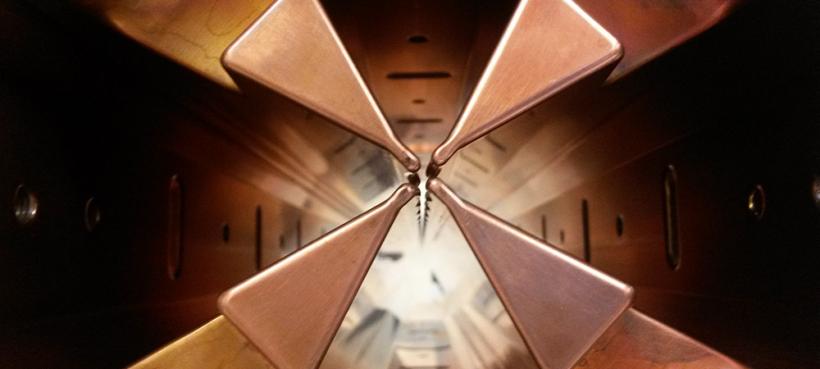
The development and application of particle accelerators and radiation detectors facilitates the PSFC’s core scientific missions and is tightly coupled to many topical areas in the center.
Accelerators at the PSFC are primarily used in two ways. First, scientists utilize the energetic particle beams as precision tools to characterize and manipulate materials at scales well below one-millionth of a meter. With these techniques, PSFC scientists have made important contributions to the field of plasma-material interactions and developed novel manufacturing techniques for optical lenses and semiconductors. Second, accelerators are used to create nuclear reactions that produce high-energy particles, such as protons, alphas, neutrons, and gamma rays, that complement the development of detectors for application in a wide variety of fields. By replicating the radiation environment of a nuclear fusion experiment or a satellite's orbit around Earth, PSFC scientists have access to onsite, controlled laboratory settings for developing and testing detectors before deployment on major experiments.
Active projects include the development of innovative nuclear diagnostics for high-energy density physics (HEDP), including the National Ignition Facility, plasma-material interaction diagnostics on the Alcator C-Mod tokamak, and satellite-born sensors for Earth's space weather. Additionally, the world-leading facilities and expertise at the PSFC contributes to collaborations with MIT academic departments, other research labs, and industry partners.
There are two major accelerator facilities associated with the PSFC:
Zach Hartwig (particle accelerators, radiation detectors)
hartwig@psfc.mit.edu
Maria Gatu Johnson (HEDP accelerators)
gatu@psfc.mit.edu